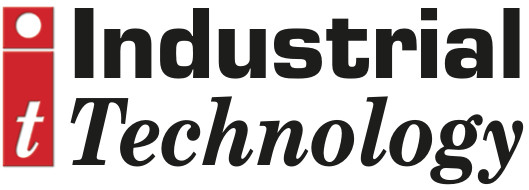
Posted to News on 3rd Nov 2021, 00:00
Magnetic gears herald a future of flying cars
It’s fair to say the market for urban air mobility (UAM) is attracting increased investment. It is reported by Roland Berger that the development and certification of an UAM aircraft will cost around US$2 bn. For newcomers to the sector, to raise such funds means it is inevitable that much of their activity is relatively public.

No doubt more conventional companies may be involved in clandestine programs. However, there are some very interesting parallels with the burgeoning electric vehicle market back in 2008. New entrants like Tesla, Coda and Fisker were emerging, whilst at the same time the mainstream automotive industry was in crisis, just as the aerospace industry is hit now by Covid-19 and severe travel restrictions.
On 11 August 2021, Joby Aviation listed on the New York Stock Exchange with a valuation of US$4.5 billion. The California based company, which has been developing an all-electric aircraft for aerial ridesharing, believes it has sufficient cash (US$1.6 billion) to fund it through to the start of commercial operations. What’s more it has already completed over 1,000 test flights and agreed a path to G1 certification of the aircraft with the Federal Aviation Administration (FAA).
The company has also taken the first steps towards becoming the first eVTOL airline with application for Part 135 Air Carrier Certificate issued by the FAA. Joby expects to start operations of its quiet, all-electric aircraft with pilot and four passengers in 2024, creating possible the first EVTOL airline.
Joby is not alone. Palo Alto based Archer Aviation (value US$1.5bn) unveiled its Maker aircraft in June 2021. It also plans to be in service by 2024. Meanwhile in Europe, Munich based Lilium is working towards joint EASA and FAA certification of its seven-seater aircraft also by 2024. Lilium, too, has announced its intention to list on NASDAQ. And German rival Volocopter is also targeting first commercial operations in two to three years.
In June 2021 UK based Vertical Aerospace also announced its intention to list in the US with a US$2.2 bn SPAC deal on the basis of pre-orders of up to 1,000 aircraft with a total value of up to $4 bn. Like Volocopter, Vertical Aerospace has its sights on the 2024 Paris Olympics as a high-profile backdrop for initial commercial operations. And the list goes on.
High power density
One common feature in the developing market is that all the solutions use multiple electric motors, which makes the performance density of the motors critical and a key for a breakthrough.
In industry technical expert Jonathon Bird’s ‘Review of Electric Aircraft Drivetrain Motor Technology’ he discusses the relative merits of various technologies, examining the continuous performance density of 25 different commercially available motors. Configurations include both axial and radial flux machines. Some are air cooled some use liquids.
The route to power density in electric machines has historically been to operate permanent magnet motors (PM) at higher speeds, often in excess of 10,000 rpm. To become useful for air mobility aircraft the high speeds need to be geared down by as much as seven times. Conventionally this introduces the requirement for a mechanical gear box, raising the issues of reliability, wear, maintenance and noise. Tallerico, Cameron, Schiedler and Hasseeb have pointed out that the reliability of mechanically gear driven propulsion motors would have to increase four-fold to meet the required safety standard for UAM aircraft.
Bird introduces the idea of magnetic gears, with reference torque densities of 49Nm/kg at a scale of 100Nm, close to the torque density of mechanical gears. He also references the ‘outer stator magnetically gear motors (OSMGM) proposed by Tallerico et al.
In an OSMGM, a magnetic gear is integrated with a conventional stator. Crucially by integrating a magnetic gear with a motor the inner high-speed magnetic rotor fulfils two functions. It is both the high-speed rotor of a PM motor and the high-speed rotor of the magnetic gear. This reduces the overall mass of the OSMGM. Tallerico et al went on to develop a high-fidelity design of an OSMGM with a torque density of greater than 30Nm/kg and better than 95% efficiency. They also concluded that this was roughly double what could be achieved using a direct drive electric motor for UAM.
UK-built solution
Magnomatics was spun out of the University of Sheffield in 2006 to commercialise technology based on magnetic gears. Among its patented products is the Pseudo Direct Drive (PDD) which is an OSMGM.
Whilst being aware of work at NASA the company’s early application priorities have been to develop the technology for offshore wind, marine propulsion and light rail. And it has built a demonstration direct drive 500kW generator for offshore wind with a torque of 200,000 Nm and efficiency in excess of 97%.
Magnomatics has been able to successfully license its proprietary PDD technology in the above sectors to blue chip organisations and is now turning its attention to the UAM market, where there is a natural fit for the novel and patented technology.
The company is also currently designing UAM propulsion motors based on PDD technology which it is believed will outperform all other machines currently available on the market, with initial demonstration machines due to be operational in 2022.









